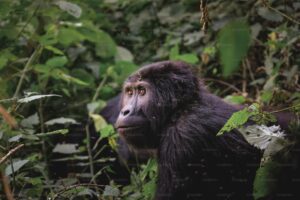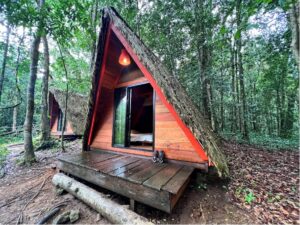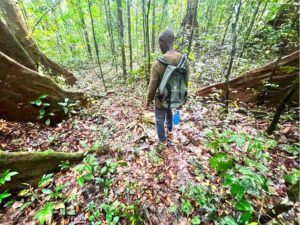
Sustainable Tourism Management for National Parks
We humans have always had a special relationship with wildlife. Just as we’ve relied on nature for shelter, protection, and comfort in all parts of the world, these delicate ecosystems rely on us to help support and maintain them. Today, global concern for the degradation of forest ecosystems is at an all-time high, along with a growing public interest in nature and natural landscapes. The best opportunity to address both concerns is to invest in sustainable management for natural parks with especially vulnerable ecosystems.
According to the World Commission on Protected Areas, the management of protected areas is central to legal, political, institutional, and practical conservation efforts worldwide. As such, maintaining these protected areas for future generations should be our top priority by ensuring they are managed with sustainability in mind. This is especially important for natural parks, which are prized ecological hotspots and some of the world’s most valuable tourism destinations.
What is Sustainable Destination Management?
Sustainable destination management is the planning, coordinating, and implementing tourism solution strategies to ensure long-term destination sustainability. These strategies help travelers and locals get the most out of a destination while minimizing damage to its natural resources.
The tourism sector has grown significantly over the past 50 years, with international arrivals increasing from 200 million to nearly 1.6 billion. With this growth comes many economic and societal benefits; however, protecting destinations and their resources from depletion makes it all the more important. To do this, strategic planning solutions must be developed for travel destinations at risk of ecological depletion. When implemented successfully, these plans can help the tourism industry flourish while benefiting local communities and protecting natural resources.
At Solimar, we develop tourism master plans that identify destinations’ assets, opportunities, and challenges. Our strategies are coordinated by in-depth research and engagement with local communities. This helps to ensure that locals and tourists get the most out of what a destination offers. Solimar’s most recent efforts involve applying these tourism master plans to national parks. These attractions have an inherent connection to nature that defines its value and greatest vulnerabilities, hence the importance of sustainable management for national parks.
Key Elements Of Sustainable Tourism and Management
When it comes to national parks, sustainable management plans should strike a balance between conservation and public access while addressing the needs of local communities. To practice sustainable management in national parks, conservation efforts have many moving parts that help consider all of these needs.
1. Visitor Management
National parks attract a significant number of visitors every day. The constant foot traffic and the threat of human interference put them at an especially high risk of ecological degradation. Sustainable management plans for national parks address this problem by managing the impacts of tourism on the environment. These efforts are highly visitor-centric, including implementing measures such as visitor education programs, infrastructure in environmentally sensitive locations, and technology for managing the number of visitors entering the park daily.
Another way visitor management can enhance the traveler’s experience is by providing information through visitor centers. Solimar has developed several visitor centers in destinations around the world. These visitor centers provide travel and accommodation information while supporting local businesses and communities.
2. Collaboration with Indigenous Peoples and Local Communities
Indigenous peoples and local communities play a unique role in the sustainable management of national parks. Their deep understanding of the local ecosystems, wildlife, and natural heritage, as they have inhabited these lands for generations, is fundamental for understanding and managing biodiversity and developing relevant conservation strategies. Their traditional sustainable knowledge, love, and respect for their lands make them invaluable partners in the sustainable management of national parks.
Approximately 476 million indigenous peoples live across 90 countries around the planet. According to the United Nations, indigenous people are ‘inheritors and practitioners of unique cultures and ways of relating to people and the environment.’ Indeed, nowadays, these communities manage 17% of forest carbon around the world, significantly contributing to climate change mitigation.
Hence, involving these communities in the planning and decision-making process is vital for building trust, inclusion, and meaningful conservation efforts. The Conservation Wor Activity is an example of an inclusive and multi-sectoral project that highlights the importance of engaging local communities in the management and preservation of protected areas and enhancing their economic growth in the long term.
3. Conservation Of Biodiversity in Protected Areas

Despite international efforts, biodiversity across the globe continues to decline. The Living Planet Report 2022 reported a 69% average loss in mammal, bird, reptile, fish, and amphibian species since 1970. The designation of national parks as protected areas can help mitigate the loss of local plant and animal species, especially those that are endangered or on the brink of extinction.
Currently, Solimar is collaborating with USAID Conservation Works Activities (CWA). This project, centered in Liberia, is about developing a sustainable management plan that engages communities in conserving protected areas. Liberia, home to the Upper Guinean Forest and a renowned biodiversity hotspot continues to face threats such as deforestation and habitat destruction. It is essential to involve local communities in creating innovative protected areas through sustainable tourism management.
4. Resource Management
Resource management is key to sustainable tourism for natural parks. A thriving yet unregulated tourism industry creates a large demand for resources such as water and wood. Consequently, destinations that face this demand may find themselves especially vulnerable to ecological depletion. This threat can be mitigated by sustainable tourism infrastructure that consumes minimal resources while contributing to the visitor experience.
Solimar is proud to provide its own example of sustainable tourism infrastructure with the Sapo Eco-Lodge in Sapo National Park, Liberia. The entire complex, complete with solar-powered energy, is built with sustainability in mind. It showcases Liberian natural heritage while providing visitors with accommodations in the heart of Sapo Natural Park, creating an unforgettable visitor experience.

Sapo Eco-Lodge, Liberia
5. Destination Management Organizations
Destination Management Organizations (DMOs) are groups that play a large role in sustainable management. UNWTO defines a DMO as “the leading organizational entity which may encompass the various authorities, stakeholders, and professionals and facilitates partnerships towards a collective destination vision.” Solimar often works with DMOs to coordinate essential destination tourism management elements, including marketing, amenities, and public access to attractions. Most importantly, DMOs are often key players in implementing sustainable management strategies.
6. Measuring Impact for Sustainable Tourism
Measuring the impact of tourism in national parks is crucial for protecting its natural resources. Solimar proposes three main reasons behind its importance for sustainable tourism:

-
- Conservation: Assessing the ecological footprint of the local tourism industry allows for developing strategies that minimize habitat degradation, pollution, and disturbance to wildlife.
- Investment: Knowing the impact of tourism can provide important information on a destination’s overall economic value. If presented effectively, this information can attract potential investors and contribute to the destination’s socioeconomic well-being.
- Education: Understanding how visitors behave and impact a destination can foster educational initiatives to raise awareness about environmental issues, biodiversity conservation, and sustainable tourism practices.
How Can I Make a Difference?
Travelers are the heart of a tourism destination. The choices we make as travelers are crucial for preserving and protecting natural resources around the world. These are just some of the many ways travelers can support sustainable tourism in national parks:
-
- Educate Yourself: Before visiting national parks or other natural tourist attractions, research the unique ecology and the wildlife that calls it home. Knowledge of the local environment can only enhance your experience as a traveler, giving you insight into and appreciation of your destination.
- Leave No Trace: Practice the “Leave No Trace” principles to minimize the environmental impact of your visit. Remember to properly dispose of your trash, including food waste and other biodegradable items. Respect wildlife by observing from a distance, avoid damaging plants or natural formations, and minimize the usage of campfires.
- Choose Sustainable Transportation: Consider using eco-friendly transportation to reach your destination: for instance, public transit, carpooling, or cycling. If you’re driving, opt for fuel-efficient vehicles to decrease your carbon footprint.
- Support Local Communities: Opt for local, eco-friendly accommodations. Buy traditional gifts from local artisans around national parks. Not only will you contribute to the local economy, but you will also have a unique opportunity to engage with local culture and traditions.
- Volunteer and Support Conservation Efforts: Many national parks have volunteer programs and organized conservation projects. Consider participating in these initiatives, such as trail maintenance, habitat restoration, wildlife monitoring, and educational programs. You can also donate to park foundations and organizations that preserve and protect national parks.
Visit our website to learn more about sustainable destination management and what you can do for national parks.

Photo by Zoe Schaeffer on Unsplash
Blog by: Kristina Algas and Marika Matarazzo
Tags: conservation, eco-lodge, liberia, national parks, natural resources, protected areas, resource management, sustainable destination management
